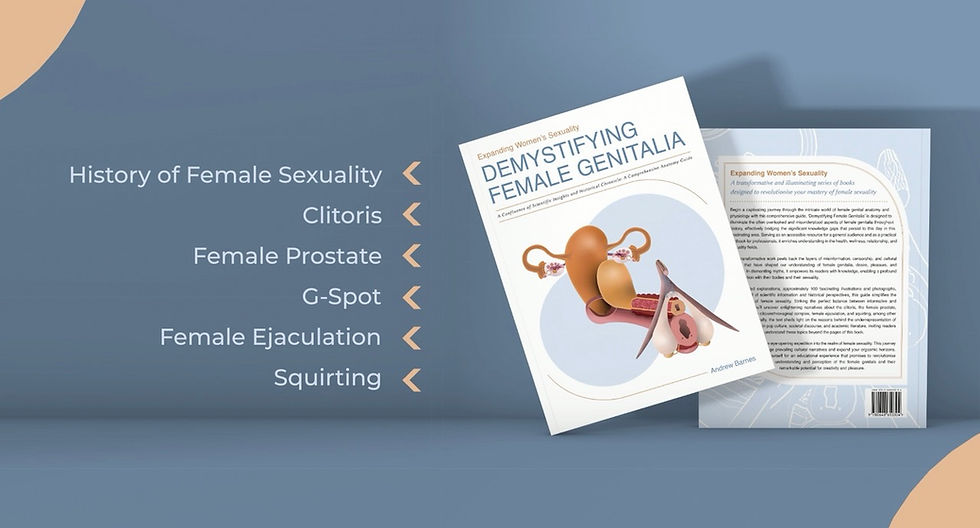Demystifying Female Genitalia: Chapter 3 - Female Prostate, Skene's Glands, and Para-urethral Glands – What's What?
- Andrew Barnes

- Apr 9, 2024
- 2 min read
Updated: Apr 30
Introduction
Chapter 3 of the book "Demystifying Female Genitalia" takes us on an enlightening journey through the location, history, anatomy, and significance of the female prostate. Long misunderstood and often overlooked, this chapter aims to set the record straight, guided by groundbreaking work like John Huffman's wax casting of the female prostate in the 1940s. Let's explore the fascinating revelations and the scientific strides made in understanding the female prostate.

Unraveling the Anatomy
We begin with the basics: What exactly are the female prostate, Skene's glands, and para-urethral glands? Through detailed descriptions and illustrations, the chapter distinguishes between these terms, tracing the history from their discovery in 1672 by Reiner de Graaf, who named it 'Prostatae Muliebris,' to the contemporary understanding of Skene's glands. The evolution of terminology reflects the journey of medical discovery and societal attitudes toward female sexuality.
Huffman’s Groundbreaking Wax Casting
A pivotal moment in the study of the female prostate is detailed with Huffman's wax casting technique in the 1940s. This innovative method allowed for the creation of wax moulds of the three types of the female prostate, providing a tangible representation of this elusive organ. The chapter features illustrations based on Huffman’s work, offering readers a visual understanding of the diversity within the female prostate anatomy.
Recognition and Research
Further discussions include the contributions of Zaviačič in the late 20th century in recognising the significance of the female prostate and the eventual official acknowledgment of its existence. A comparison of the female and male prostate reveals not just the anatomical and functional similarities, such as the ability to produce prostatic fluid, but also the unique aspects of the female prostate.
Controversies and Clarifications
The chapter navigates through the para-urethral ducts controversy, the purpose and secretions of the female prostate, and the common diseases and misdiagnoses associated with it. It highlights how misinterpretations of the female prostate's health conditions have often led to incorrect treatments, emphasising the need for greater awareness and understanding.
Conclusion
Chapter 3 stands as a testament to the female body and the importance of ongoing research and education. By demystifying the female prostate and celebrating the contributions of pioneers like Huffman and Zaviačič, we can appreciate the depth of our biological heritage and the progress made towards understanding female sexuality.
In "Demystifying Female Genitalia," we're not just uncovering hidden aspects of the body; we're also challenging historical misconceptions and fostering a deeper, more inclusive conversation about female health and pleasure. Join us as we continue to explore, question, and celebrate the wonders of the female anatomy, one chapter at a time.





Comments